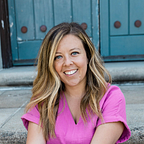Cohort Eight Travels to China: Part 1
An up-close look at manufacturing
Goodbye, SF; Hello, SZ!
On March 17, Gate 94 at SFO buzzed with excitement: the Highway1 startups were traveling to China. Ten startup team members, accompanied by four staff and two mentors, were headed to Shenzhen to experience the intricacies of mass manufacturing up-close and personal.
After 13 hours of flying, we arrived in Hong Kong early Sunday morning. We collected our luggage, grabbed some coffee, loaded ourselves into three vans, and began to make our way to Shenzhen.
Shenzhen is located along China’s southeast coast in the Guangdong Province, about a 45 minute drive from Hong Kong. Shenzhen’s massive growth through the ’80s and ’90s led to its designation as a Special Economic Zone in 1980. A Special Economic Zone (SEZ) is an area established within a country’s borders in which business and trade laws differ from the rest of the country. To learn more about Special Economic Zones, click here.
Shenzhen became the largest manufacturing base in the world, home to many tech companies.
Sunday — Arrival Day
We arrived at the Four Points Sheraton in Shenzhen around 10 am, settled into our rooms, and then met for a walking tour of the local area. We broke into smaller groups for lunch and enjoyed authentic neighborhood Chinese food.
After lunch, we reconvened to go explore Shenzhen’s electronics market, Hua Qiang Bei (HQB). Armed with bunnie Huang’s The Essential Guide to Electronics in Shenzhen, the startups split into different taxis and were on their way.
HQB is a wonderful district to purchase components, consumer electronics, and so forth. Many of the startups headed to the components area of HQB: LEDs, resistors, capacitors, connectors, etc. Some startups were looking for specific components while others went to browse the vast array of offerings.
After several hours of negotiations and component explorations, we met for dinner at TongTaiXuan, a family-style seafood restaurant (I’ve never seen a lazy susan so large!). We were joined by PCH’s Director of Program Management Sean O’Herlihy, hardware entrepreneur and former Pebble CEO, Eric Migicovsky, and founder of Innovative Auctions and angel investor Ulrich Gall. The excellent food and drinks were only surpassed by the caliber of hardware chatter.
Everyone went back to the hotel happy and full, prepared to take on day two.
Monday — Learn, learn, learn!
On Monday, we packed everyone into a conference room at the Four Points Sheraton for a series of manufacturing and supply chain sessions. Highway1 VP Kurt Dammermann kicked off the day moderating a panel featuring PCH’s Head of Sustainability Alan Cuddihy, Director of Program Management Sean O’Herlihy, and Business Unit Director William Duffy. The discussion centered around startup manufacturing: what it takes to get there, how to navigate manufacturing, and more.
The day’s second session focused on packaging, and was led by PCH’s Design Manager, Josa Leung. She explained that packaging isn’t just a box; it’s an experience. Josa highlighted various case studies and showcased several different packaging samples that were designed with specific customer experiences in mind.
Nancy Cao, Director of Supply Chain at PCH, led the final session of the day. She provided an overview of manufacturing with a step-by-step discussion of Supply Chain Management, including the timelines and personnel involved, and how to best manage supply chain.
Once the lectures ended, we loaded the startups into a bus to view the first factory of the trip, a kitting facility. Kitting refers to the step in manufacturing in which components needed for a product are gathered and issued for use. Think of this as putting all the parts into the box and sealing the package, ready for the customer or a retail shelf. Seeing kitting at scale was a first for many of the startups and it raised really great questions and conversations.
After the kitting facility tour, we invited the whole PCH office to watch the startups pitch. The room was full and each startup presented their company and product. It was a great ending to the day.
